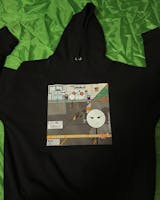DTF film used in the Direct Film printing process is one of the most preferred digital printing methods. This method, the basic principle of which is based on transferring on clothing, is different from traditional printing techniques. The use of hot peel film and cold peel film is one of the curious technical issues. This issue is very important for a more professional and accurate printing method.
What is Cold Peel Film?
Cold peel film is one of the DTF PET films used in DTF transfer method. This film, which is produced from the chemical component silicone, is easy to apply. It also has a release layer and is more stable than hot peel film. This film, which is applied at specific temperatures and over a period of time, is particularly suitable for complex printing applications.
Is Cold Peel Suitable for DTF Transfer?
Two different peels can be used for DTF. Therefore, both hot and cold printing can be used for this printing method. However, there are some differences between hot peel film and cold film. Hot peel film is more suitable for large patterns with temperature 140℃-150℃. Cold peel film is suitable for many kinds of fabric types.
What are the Differences Between Cold Peel and Hot Peel?
We have already mentioned that cold peel and hot peel films are suitable for DTF transfer. However, it should be noted that they do not have the same function as there are some differences between them. Below is information about the differences between these peel film types:
- The main component of hot peel film is wax while that of cold peel film is silicone.
- The hot method involves pressing at 140-150°C and a processing time of 5-10 seconds. In cooling, there is pressing at 150-170°C for 10-20 seconds and cooling for 30 seconds.
- The cost is higher for hot peel film. However, less cost is required in cooling film.
- The cold peel method is suitable for many fabrics, especially for special fabrics such as canvas and flannel. The hot peel method can be applied to any fabric, regardless of any special fabric.
- The hot peel method is efficient up to 100 t-shirts per hour. Cold peel is less efficient.
Cost of Hot Peel Film and Cold Peel Film
One of the differences between hot peel film and cold peel film is the cost. The production process of hot peel film is more detailed and longer. The coating accuracy and uniformity requirements of the coating machine used to produce the film with this method are more stringent. Therefore, the cost of hot peel film is higher than cold peel film.
Is Cold Peel Film Efficient for DTF Transfer and How Efficient Is It?
Cold peel film is suitable for DTF transfer. However, when it comes to efficiency, hot peel film is recommended. Because this film tears immediately after printing without waiting and saves time. T-shirt prints are produced after the film is torn after the heat press. Since it is possible to print 100 t-shirts in 1 hour on hot peel film, this printing method is more efficient. Cold peel film is more efficient in terms of detail and granularity. Nevertheless, we can say that it is less efficient than the other.
Is Hot Peeling Film or Cold Peeling Film Better?
Whether hot peel film and cold peel film are good or not depends on their properties and application areas. However, hot peel printing is more commonly used. It is the most preferred type of film, especially in cotton t-shirt printing. Cold peel film also produces better results in detailed and more complex patterned prints.









